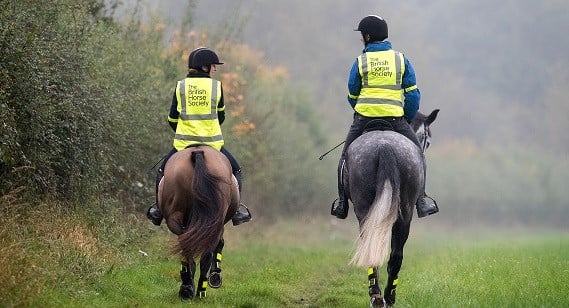Rural Road Safety Advice for Cyclists

Over recent years, cycling has seen a surge in popularity, particularly during periods of local and national lockdowns, with quieter roads tempting many of us to dust off our bikes and take to the road.
The benefits of cycling are far reaching and include improved physical fitness and mental wellbeing. In addition, cycling is a clean, green mode of transport, and can also be enjoyed socially with friends and family.
Britain’s rural roads are an ancient and special network that are a joy to cycle. However, whilst cycling on rural roads can feel liberating, safe and relaxing, it’s important to remember that you’ll be sharing the road with local people and other visitors. Routes through the countryside often include narrow, winding roads with no markings, high hedges, poorly maintained road surfaces and soft verges. And with increased cycle traffic on rural roads comes increased pressure on cyclists and fellow road users to stay safe and respect one another.
Here, Nick Chamberlain, Policy Manager at British Cycling, shares his thoughts on staying safe whilst enjoying cycling on rural roads:
- Ride defensively but respectfully – on narrow, winding country lanes it’s important that you don’t ride in the gutter. Instead make sure you ride in a visible position away from the edge of the tarmac. If you’re aware of vehicles waiting behind you, pull in when you consider it is safe to do so and if the speed limit will allow a safe overtake.
- Be considerate of the needs of other road users – when riding in small or large groups you can ride two abreast and it’s often safer to do so, particularly in larger groups or when accompanying children or less experienced riders. Consider riding in the centre of your lane on quiet roads, in slower-moving traffic and at the approach to junctions or road narrowings. Be aware of drivers behind you, allowing them to overtake (e.g. by moving into single file) when you feel it is safe to let them pass.
- Pass with sufficient space and speed - Allow at least 2 metres of space and keep to a low speed when passing people walking in the road e.g. where there is no pavement. Pass horse riders and horse-drawn vehicles at speeds under 10mph and allow at least 2 metres of space. Remember that horses can be startled if passed without warning and should not be passed on their left. You can let them know you are there by ringing your bell or by calling out politely.
- Be particularly careful around junctions – especially those where minor rural roads meet busier, higher speed A roads. Junctions are places of potential conflict and so caution is crucial when navigating them. Remember to give priority to people crossing or waiting to cross at junctions. Where a car is turning, you have priority if you are cycling straight ahead.
- Wear the right clothes – In the mixed light and weather conditions that are typically encountered during a daytime ride in the UK, there’s no one type of clothing that will ensure you’re seen at all times. Further details on appropriate clothing and safety equipment can be found at: Cycle Safety – THINK!
- Light your way – if you know that your route includes long tunnels, sections with overhanging trees or if you just want to stand out a bit more, you might want to consider running lights during the day. Also, if you’re heading out in the late afternoon or evening and there’s a chance your ride might overrun, remember to take lights with you.
- Consider the communities you are cycling through – remember that the countryside is a working landscape and home to many. Be considerate of these residents and remember that you are a visitor to places that others call home.
British Cycling is the National Governing Body of the sport of cycling, home to the most successful team in Olympic history in the Great Britain Cycling Team, with unrivalled access to experts, insight and knowledge. Find out more and become a member. britishcycling.org.uk


